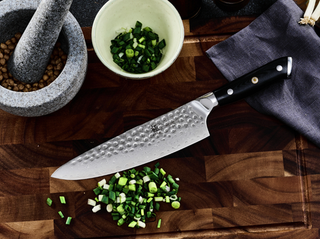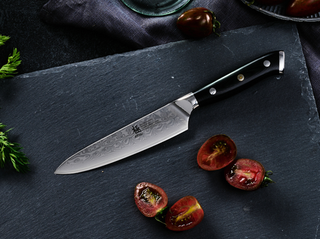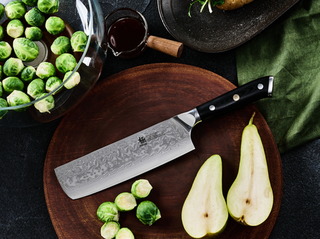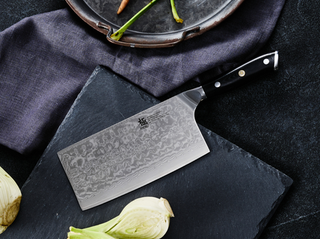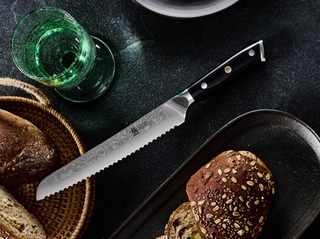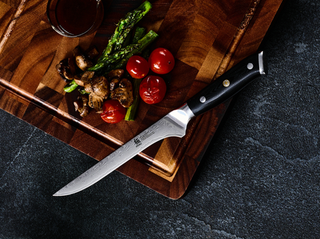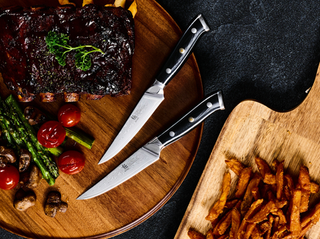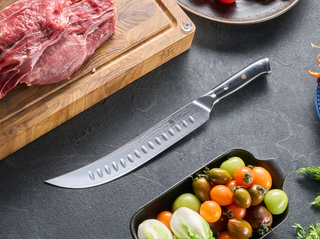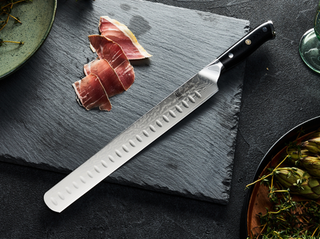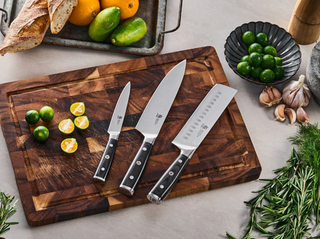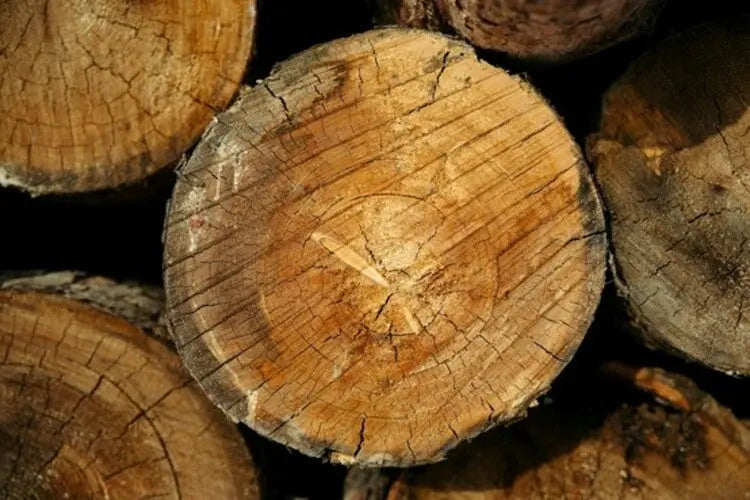Your cutting board takes more abuse than any other tool in your kitchen. Yet most home cooks don't realize they might be using the wrong type – leading to dulled knives, trapped bacteria, and boards that age like milk instead of wine. Here's what professional chefs know about end grain vs edge grain cutting boards that could transform your daily cooking experience.

1. Wood Grain Direction
Picture the inside of a tree trunk. It's made up of millions of tiny tubes (called xylem) that once carried water from roots to leaves. These tubes are nature's original drinking straws, and they determine everything about how your cutting board performs.
End Grain Cutting Board Design
- Imagine looking down into those natural straws
- Wood fibers stand vertically like a microscopic bamboo forest
- Your knife blade slides between these fibers
- Cost: Usually $150-400+ for quality boards
Edge Grain Cutting Board Design
- Picture those same straws lying on their sides
- Wood fibers run horizontally across the board
- Your knife cuts across these fibers
- Cost: Typically $50-150 for good boards

2. What Scientists Discovered About Wood Cutting Boards
End grain cutting boards resist deep scarring, but that's not even their most impressive feature. These boards actually fight bacteria on their own, thanks to how they're built. Those tiny wood channels that once moved water through the tree can now pull bacteria deep into the board, where it dies off within days from lack of moisture.
Don't just take my word for it. Dean Cliver from UW-Madison's Food Microbiology department studied this and found something fascinating: wood naturally draws in food juices and bacteria through these channels until the surface is clean. Once inside, that bacteria isn't coming back out.
This is why end grain boards have been a butcher shop standard for generations - they're durable and naturally cleaner than you'd expect.
3. The Real Difference in Daily Use
End grain cutting boards demonstrate their self-healing properties through daily use. When a knife meets the board, wood fibers naturally separate and close back together, keeping the surface smoother longer while resisting bacterial growth. This same structure protects your knife edges, as blades slide between wood fibers instead of chopping across them.
Edge grain cutting boards work well in practical scenarios. Their lighter weight and simpler construction make them ideal for quick prep tasks, while they are cheaper and they are easier to maintain daily. These boards handle messy cooking scenarios particularly well, from BBQ prep to working with serrated steak knives.
Maintenance needs differ significantly between the two styles. Edge grain boards require less frequent oiling and resist moisture better in humid environments. While end grain boards need more attention, their durability and knife-friendly surface make them a worthwhile investment for serious cooks who value blade maintenance.
4. Making the Smart Choice

Consider these often-overlooked factors:
Kitchen Workflow
- End grain excels for heavy prep work, while edge grain better for quick tasks
- Their weight affects board mobility
- Storage space requirements
Cooking Style Match
- Professional techniques favor end grain cutting boards
- Home cooking suits either type
- Prep volume matters
5. Expert Care Tips for Both Types
End Grain Maintenance:
- Oil every 3-4 weeks
- Use food-grade mineral oil
- Store flat, away from heat
- Clean immediately after use
Edge Grain Care:
- Oil every 6-8 weeks
- Avoid prolonged water exposure
- Store vertically when possible
- Need regular surface inspection
6. Making Your Choice
Choose End Grain Cutting Boards if:
- You own quality Japanese knives worth protecting
- You cook daily and prep a lot
- It has a long term value though might be more costy than edge grain
- You're serious about your kitchen tools
Choose Edge Grain if:
- You're looking for good value and don’t need excessive features.
- You cook occasionally
- Easy maintenance is your priority
- You need something lighter
The quality of construction ultimately determines a cutting board's performance. This means tight, seamless joints with no gaps or fillers, properly dried hardwood, and a smooth, well-conditioned surface. These fundamentals matter more than whether a board is edge or end grain.
For those ready to invest in an end grain cutting board, Kyoku's End Grain Cutting Board offers exceptional quality at its Black Friday sale price. The board comes complete with a box of food-grade mineral oil for proper maintenance, making it a particularly good value for serious home cooks.
A Final Word
Think of your cutting board choice like choosing your Japanese kitchen knives – it's an investment in every meal you'll make. The right board makes cooking more enjoyable and your knives perform better. Before you choose end grain or edge grain, understanding these differences helps you make an informed decision that matches your cooking style and kitchen needs.
Cutting Boards FAQ
Q1: What’s the difference between edge grain and end grain cutting boards?
A1: Edge grain boards have wood fibers running horizontally, so your knife cuts across the fibers. End grain boards show the wood fibers standing vertically, allowing your knife to slide between them, which helps protect blade edges and makes the board more durable.
Q2: Which type of cutting board is better for knife care?
A2: End grain boards are gentler on knives because the blade slips between the wood fibers rather than chopping across them, helping keep your knives sharper for longer.
Q3: Are there any hygiene benefits to end grain boards?
A3: Yes! End grain boards naturally pull bacteria into the wood's channels where it dies off, making them self-healing and resistant to deep cuts and bacterial buildup.
Q4: What about maintenance—do they require different care?
A4: Yes, end grain boards need oiling more often (every 3-4 weeks) and should be stored flat, while edge grain boards require less frequent oiling (every 6-8 weeks) and prefer vertical storage.
Q5: Which board is better for everyday home cooks?
A5: Edge grain boards are often lighter, easier to maintain, and more affordable, making them great for casual cooking. End grain boards are ideal if you do a lot of food prep and want a long-lasting, knife-friendly surface.
Q6: How do I choose between edge grain and end grain?
A6: Consider your cooking style, budget, and knife investment. End grain boards suit serious cooks and professional techniques, while edge grain boards fit well for quick tasks and occasional use.
